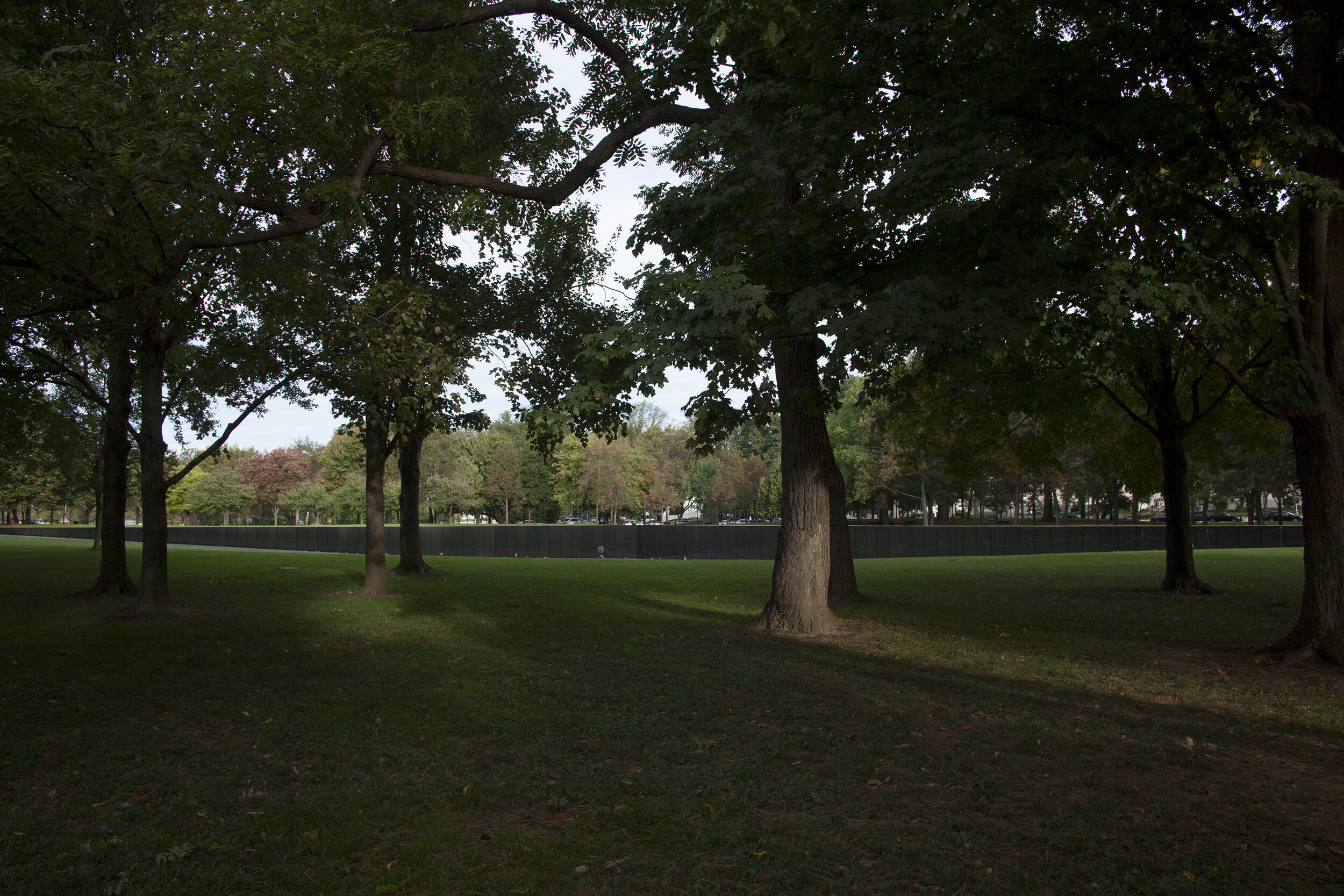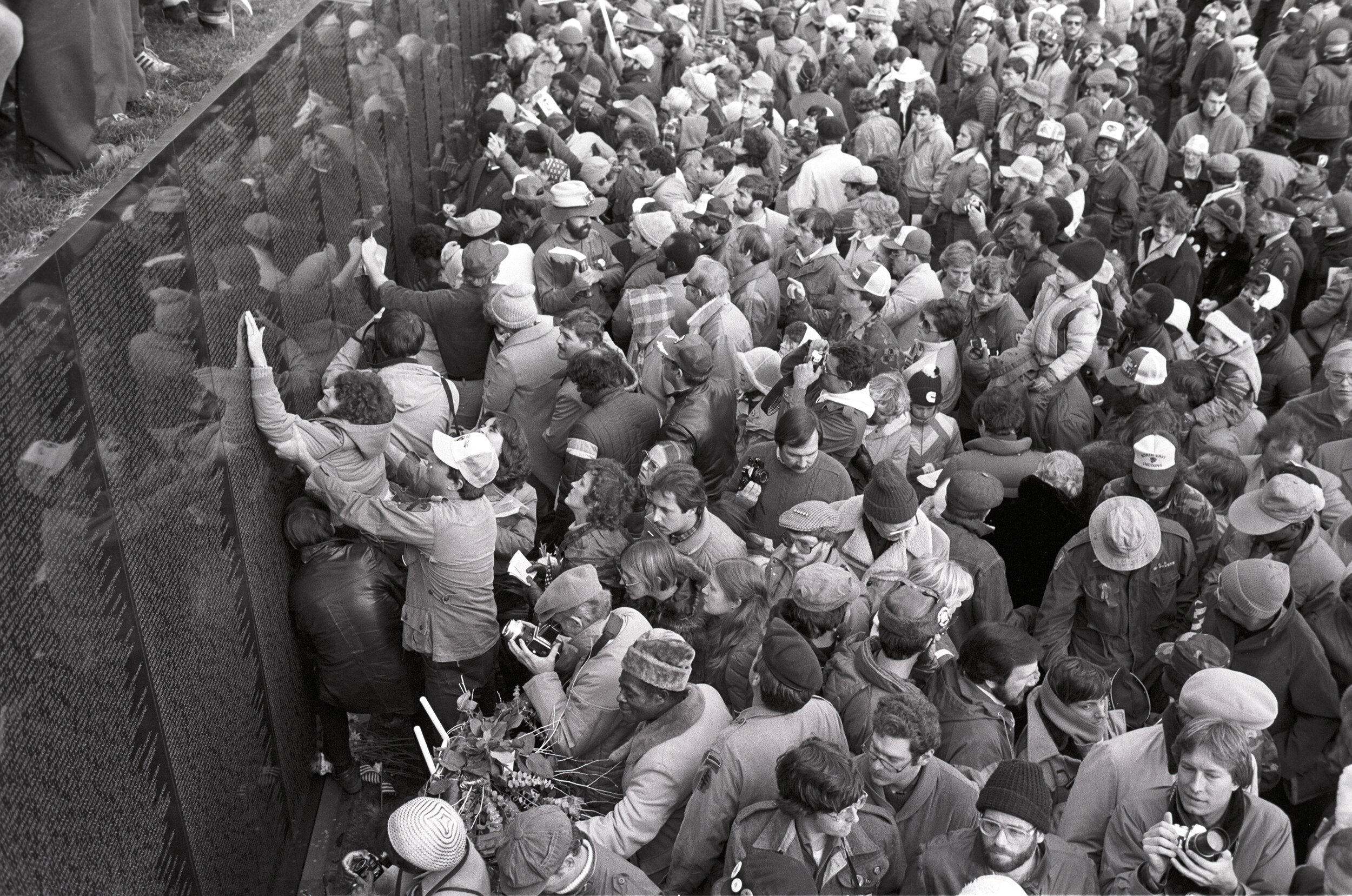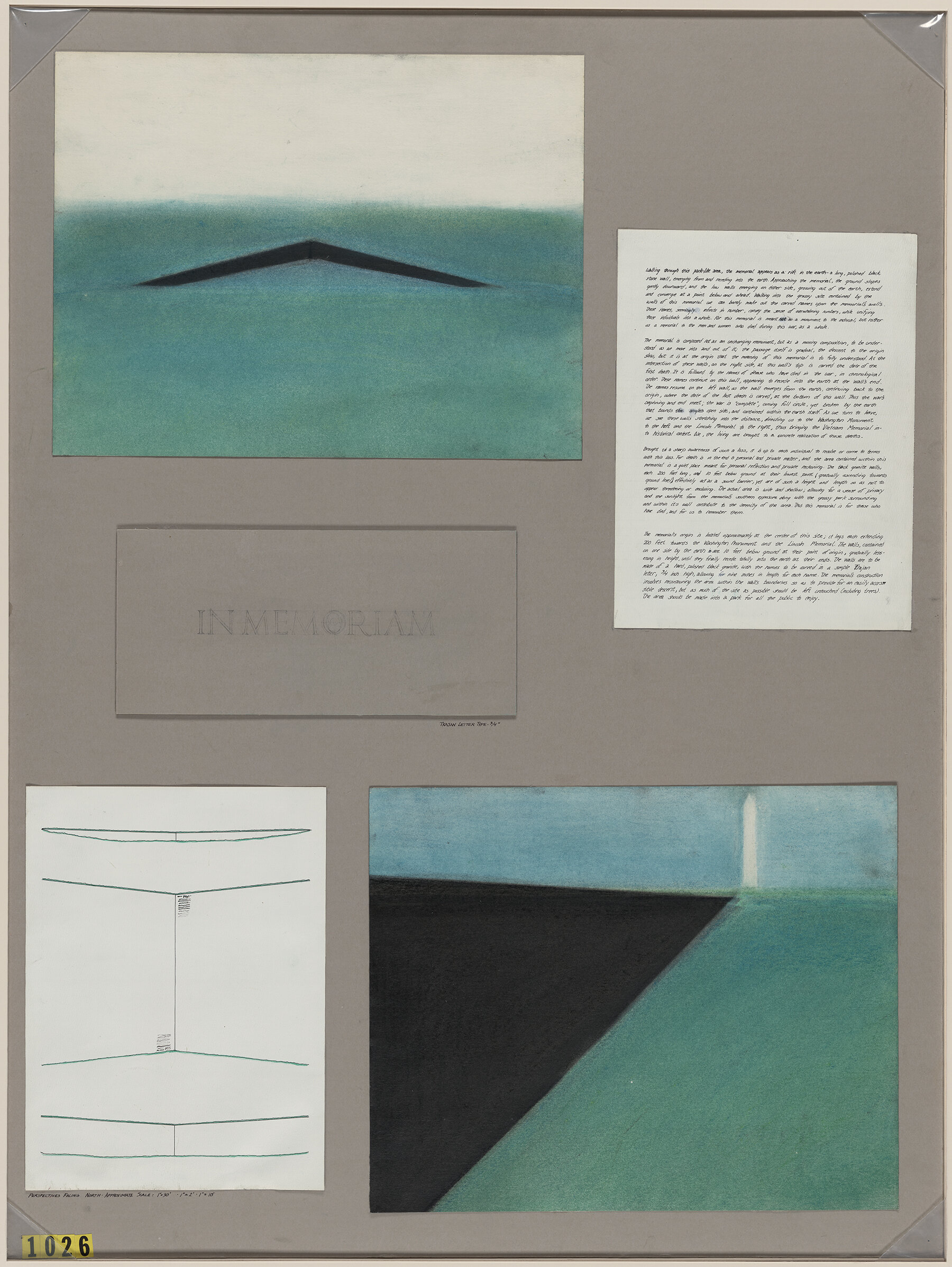Vietnam Veterans Memorial, 1982
National Mall, Washington D.C.
Sponsor: Vietnam Veterans Memorial Fund
Architect of Record: Cooper-Lecky Partnership
Landscape Architect: Henry Arnold
Photography: Terry Adams, Mark Segal, Victoria Sambunaris, Wendy Watriss
One of my classmates had seen a poster for a competition for the design of a Vietnam Veteran’s memorial, and since we had just completed an assignment for the design of a memorial to World War III, we chose to end the class with this project.
In researching for the WWIII assignment, I had noticed how war memorials often focused on the victor, rather than on the individual soldiers’ lives, until the memorials to World War I in Europe. Those monuments were created, listing all the names of soldiers lost in the battles. The use of identification tags had not yet been introduced and with the onset of modern warfare, there was no way to recognize and identify so many of the soldiers, so many of the monuments were erected to the missing, with all the names of those killed listed.
I was struck by how emotionally powerful they were and I knew that I wanted to create a work that would focus as well on the individuals.
On seeing the site in Washington D.C. over Thanksgiving break, I had an impulse to cut open the earth. I imagined cutting into the earth and polishing its open sides, like a geode.
We had also just received the guidelines for the competition which stipulated that the names of all those killed be listed, and that the memorial be apolitical and contemplative in nature. My design evolved into two black granite walls, placed below grade, engraved in chronological order with the names of the men and women who gave their lives in the Vietnam War. At the apex where the two walls join, the dates 1959 and 1973 (marking the beginning and end of the war) “meet,” thus closing the circle of the time span of the war. A veteran can find his or her own time on the wall, and all visitors would be able to see themselves reflected in the names. I wanted the memorial to create a private and personal connection with each viewer to those names.
The memorial’s sighting is directly related to the presence of both the Lincoln Memorial and Washington Monument, tying the three together physically and historically. The semester ended and I decided to enter the design in the actual competition that spring, not because I had any thought it could win, but because I wanted to say something about making this memorial personal, human, and focused on the individual experience. I wanted to honestly present that time and reflect upon our relationship to war and to loss.
Coincidentally a few weeks before I submitted the design one of my professors, Vincent Scully, in a seminar I was taking, described one of the World War I memorials I had previously studied, Lutyen’s Memorial to the Missing of the Somme at Thiepval. In his description he talked about it as a journey towards an awareness of loss. I realized how close the experience he described was to my design for the Vietnam memorial—though formally they couldn’t have been more different. And I started writing about my design while still in his class; I hand wrote that essay directly onto the competition boards (you can still see typos) and sent in the project.
Related Press:
Goldberger, Paul. Maya Lin’s Power of the Serene. The New York Times (October 29, 1995: 17, 29)
Danto, Arthur. The Vietnam Veteran’s Memorial. The Nation (August 31, 1985: 153)
Forgey, Benjamin. Model of Simplicity. The Washington Post (November 14, 1981)












